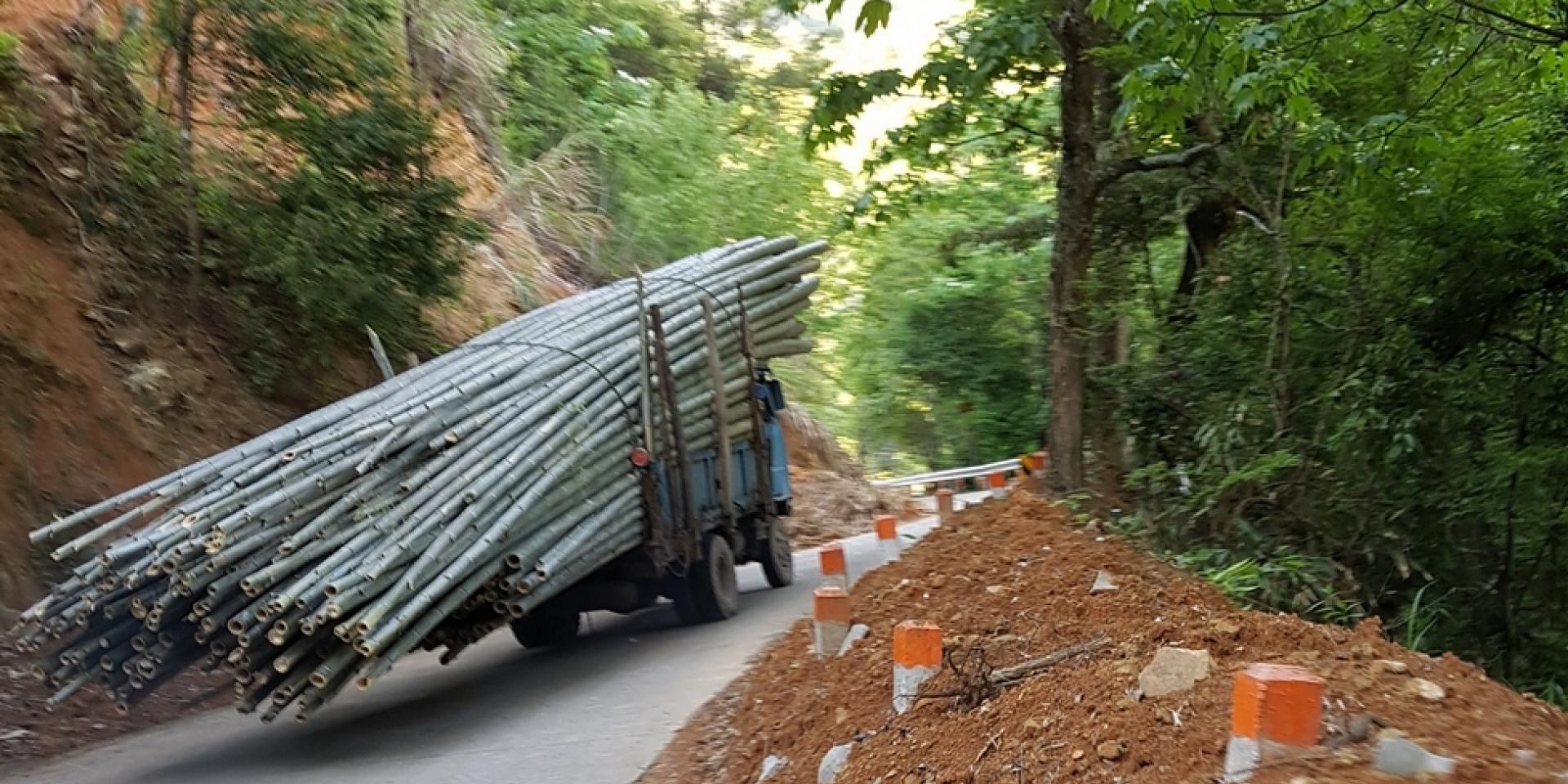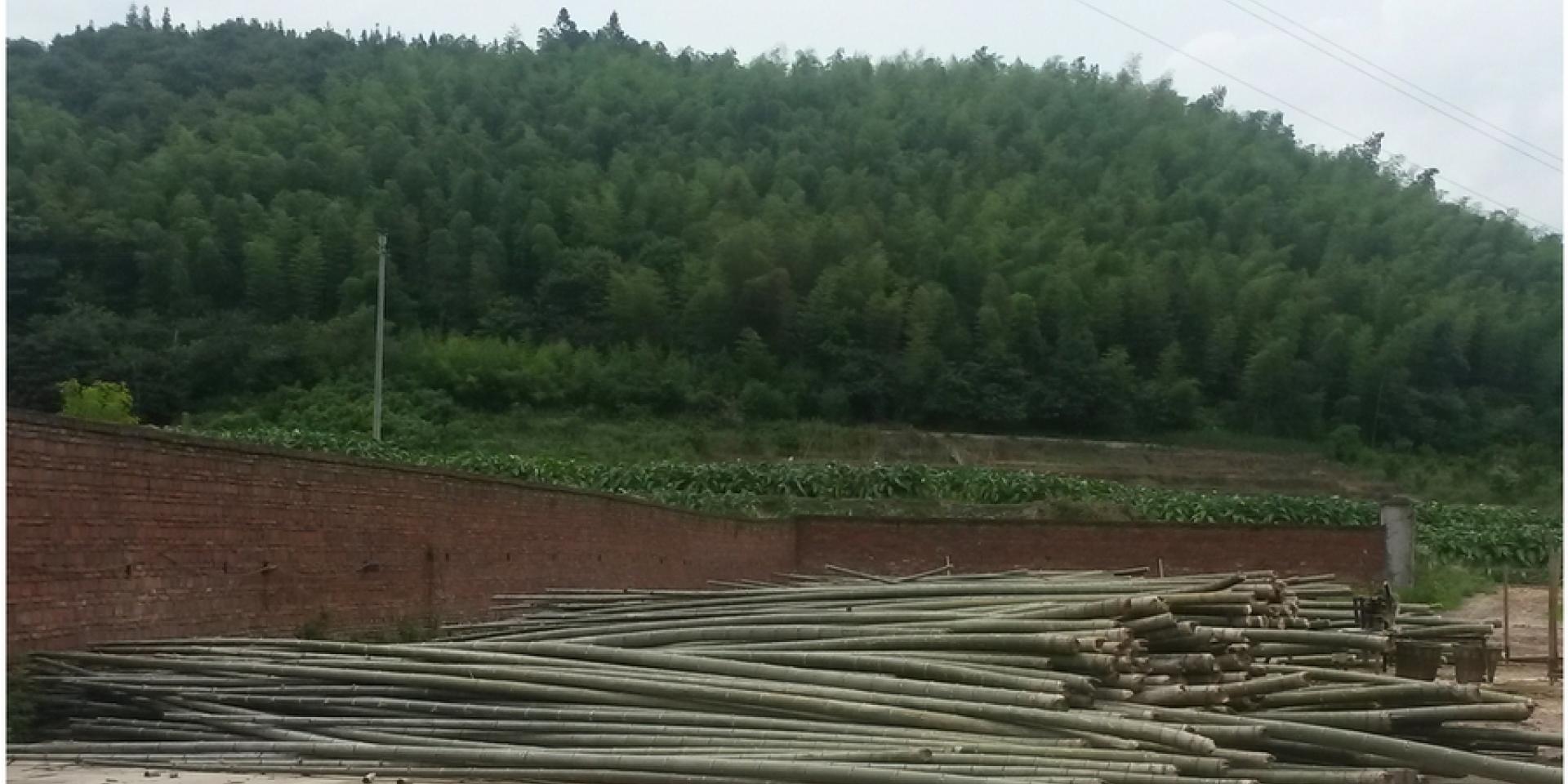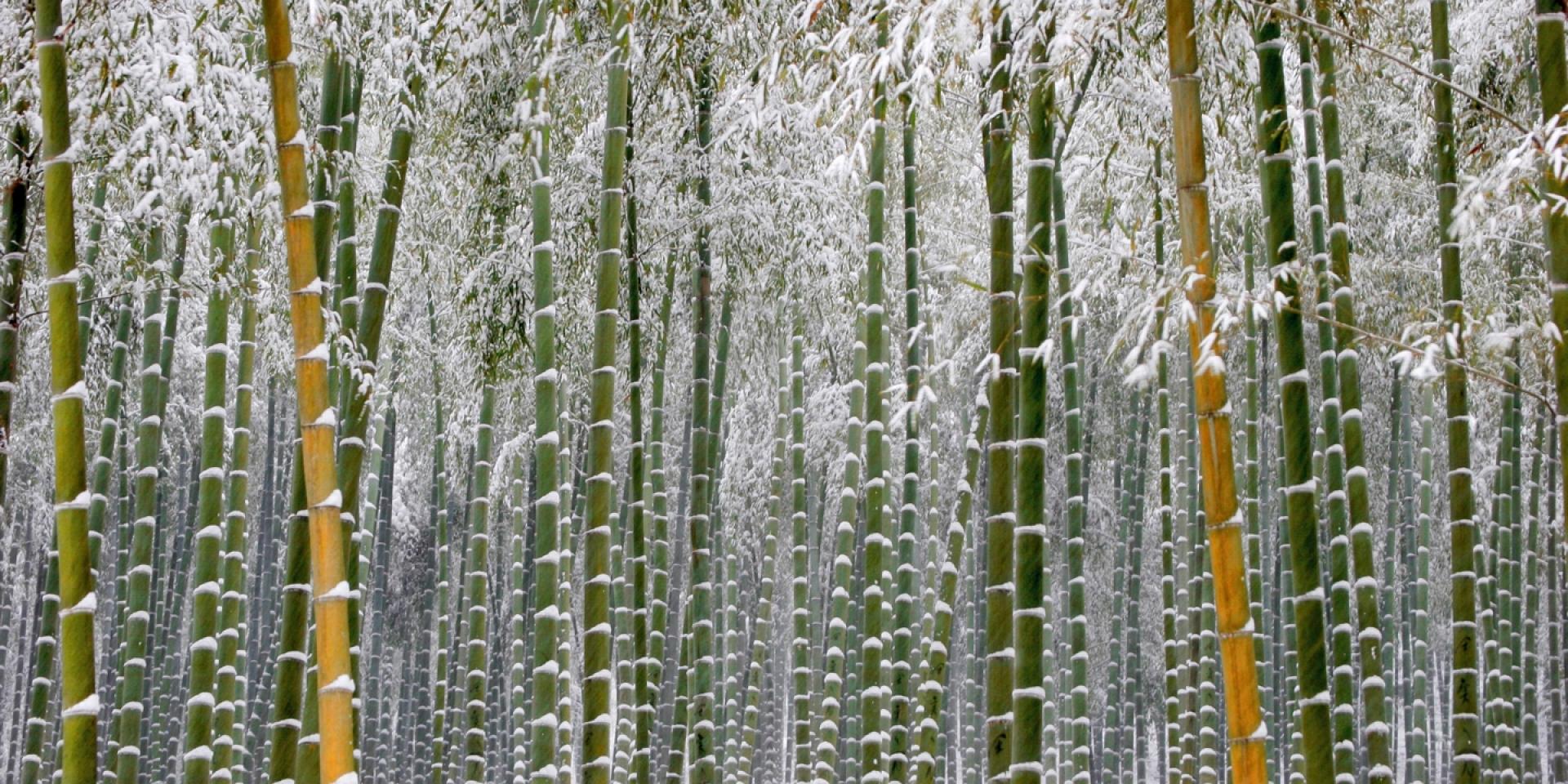The bamboo forest
The bamboo is a grass, not a tree. It is the fastest growing plant on earth and can be harvested while preserving the mother plant.
For our line of furniture, we use the moso bamboo, a giant bamboo of the forests in Fujian province in southeast China. This specie of bamboo is one of the most interesting natural resources in terms of ecological development: it is very hard and resistant, comparable with tropical hardwoods.
The parent plant of moso bamboo has several underground roots (rhizomes) from which the new bamboo stems (shoots) develop. A parent plant can produce several dozens new stems a year. The stems grow very fast, up to 1 meter a day, and at the end of the growing phase can reach 20-30 meters. After 4-5 years the stems harden and reach maturity. The mature stems of good quality are selected and harvested by local farmers. The cut stems leave the place for new shoots to emerge. That kind of reproduction does not need any intervention and renders the bamboo an inexhaustible natural resource.
A sustainable local economy
Bamboo agriculture requires minimal investment and can procure a regular income to local farmers and workers. The harvest and processing of the bamboo stems a local activity: The stems are relatively hollow, representing a ration of about 25 between the volume of the stems to the volume of resulting processed strips. It therefore imposes a local economy. It is also a sustainable economy, as opposed to the exploitation of tropical trees. Those trees can be logged and transported (by boats) to a processing factory in another continent, without loosing much volume between the logged tree volume and the resulting processed lumber volume. The age of a mature tropical is tree is about 50 years on the average, which contributes to the deforestation of tropical forests despite protection measures.
The carbon footprint
The moso bamboo we use absorbs CO2 and produces O2 much better than trees. The bamboo forests are a non-negligible source of absorption of CO2. Even if we consider the CO2 emission generated by the whole cycle of processing the bamboo, fabricating the furniture, and transporting it to Europe, we still get a close to zero carbon footprint. We are however engaged to continuously look for solutions to improve the carbon footprint. For example, optimizing freight by relocating furniture manufacturing to an area near the destination (market).
As a conclusion, if we were first attracted to the natural and aesthetical aspects of the bamboo, we fast became conscious of its material strength, and that it encourages the development and sustainability of a local economy respectful of the environment.



